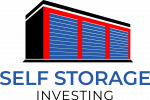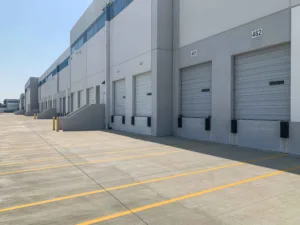After buying or building your new self storage business, establishing a strong local presence is key to success. An online local presence allows you to reach a new base of customers at the time when they are researching self storage options. This allows you to acquire customers right when they’re ready to rent a self storage unit. In this article, we’ll delve into specific content marketing strategies tailored to help new self storage businesses thrive in their local markets.
1. Start with an Informative Website
Your website is the cornerstone of your online presence. Ensure it provides a seamless user experience and contains all essential information that potential customers may seek:
- Location Details: Clearly display your address, contact information, and a map showing your facility’s location. Having easy to access contact information, like your phone number displayed across the top of your website, helps potential customers understand that you’re there to help.
- Photographs of Your Facility: High-quality photos of your facility and units help set proper expectations and connect the local area to your business. You may even opt to hire a photographer to take and edit photos for your website and other promotional material.
- Unit Sizes and Pricing: Create a user-friendly page detailing the various unit sizes available and their corresponding prices.
- Security Features: Highlight your facility’s security measures, such as surveillance cameras, access control, and secure locks.
- Accessibility: Explain your facility’s accessibility, including gate hours and access policies.
- Customer Reviews and Testimonials: Showcase positive reviews and testimonials from satisfied customers to build trust.
2. Invest in Local SEO
Local search engine optimization (SEO) is vital for ensuring that your website ranks well in local search results. Here’s how to do it:
- Google Business Profile: Claim and optimize your Google Business Profile listing. Ensure your business details are always up to date, including your name, address, phone number, and business hours. Include high-quality photos of your facility. Keep an eye out for questions asked to your business and answer them, which will become an off-page “FAQ” for potential customers. Encourage reviews from your existing customers, as people often look to business reviews when shopping for self storage units. The more information you include and the more features you use with your Google Business Profile, the better for your local SEO.
- Local Keywords: Incorporate local keywords throughout your website’s content, including in titles, headings, and descriptions on your website. For example, if your facility is in Florida, use keywords like “Florida self storage.” You can use a basic keyword research tool, or Google Trends for free and basic keyword research for popular queries. Always be sure to look at your specific area when doing keyword research. Keep in mind to focus on general queries instead of search queries containing other brands.

Google Trends related queries to “self storage” within the Ft. Lauderdale, Florida area
- Content Localization: Create content tailored to your local community. Discuss local events, news, or issues related to self storage in your area. This same content can be used on both your website and social media pages. People love supporting businesses involved in their local community, and the more involved with your community you are, the more trustworthy your potential customers will find you.
- Local Backlinks: Backlinks are links from another website on your website. Seek opportunities for local backlinks from reputable sources within your community, such as local news websites or business directories. This is a great opportunity to tie in local events and news to your business. Try not to flood your website content with backlinks, rather provide a few focused and relevant backlinks somewhere like your blog.
3. Speaking of Blogs…Start One
Blogging is an excellent way to provide valuable information to potential customers while improving your website’s SEO. Try to match blog topics to search queries from your keyword research. Starting with 1 blog post a month is a great frequency to start ranking. Here are some general topics you can use to start:
- Storage Tips: Share storage tips and organization hacks to help customers make the most of their storage units.
- Local Guides: Create guides to your city or neighborhood, highlighting its attractions, amenities, and the need for self storage.
- Moving Advice: Offer moving tips, checklists, and advice for those preparing to store their belongings.
- Customer Stories: Share success stories or testimonials from satisfied customers who have used your self storage services.
Keep in mind, SEO is a long-term game, so it can take 3-6 months to start ranking for queries, and over a year to improve your SEO ranking for particular keywords. For this reason, it’s better to attempt to rank for 5-10 relevant keywords and focus your website content on those. You can write content about trending search queries, but don’t neglect your core keywords when doing so.
4. Leveraging Additional Visual Content
Visual content, such as photos and videos, can significantly enhance your content marketing efforts:
- Facility Tours: Create a video tour of your facility, showcasing unit sizes, security features, and cleanliness.
- Customer Testimonials: Record video testimonials from happy customers sharing their positive experiences.
- Team or Staff Photos: Share professional photos of your staff to build trust with your customers. A great group photo goes a long way.
- Infographics: Create infographics to simplify complex topics, such as how to pack and store items effectively.
5. Engage on Social Media
Active social media engagement helps you connect with your local audience and build a community around your brand. Social media can be a great way to reach customers outside of a search engine, and can build your brand’s identity with customers:
- Consistent Posting: Regularly share updates, promotions, useful content, or even local news on platforms like Facebook, Instagram, and X (formally Twitter). Once a week is a great frequency to start, as the more frequently you post, the more likely you will be seen, and the more likely your content will be shared. You can typically schedule social media posts in advance on these platforms, so you can prepare content in advance without breaking up your daily workflow.
- User-Generated Content: Encourage customers to share photos of their storage units and experiences on social media. Repost and celebrate their posts.
- Local Engagement: Participate in local groups and discussions on social media platforms to establish your presence within the community.
6. Email Marketing
Email marketing can help you nurture leads and keep existing customers engaged:
- Newsletter: Send out regular newsletters with updates, promotions, and valuable storage tips.
- Personalized Content: Segment your email list and send personalized content based on customer preferences and behaviors.
- Customer Feedback: Request feedback from customers via email and use it to improve your services and customer experience.
7. Offer Special Promotions
Promotions and discounts are effective content marketing tools to attract new customers:
- New Customer Discounts: Offer special rates or discounts to first-time customers who sign up for your self storage services.
- Seasonal Promotions: Create seasonal promotions, such as “Summer Storage Specials” or “Holiday Savings.”
- Referral Programs: Encourage your existing customers to refer friends and family by offering referral discounts or incentives.
8. Monitor and Adjust
Regularly monitor the performance of your content marketing efforts using analytics tools like Google Analytics and social media insights. Pay attention to metrics such as website traffic, engagement, conversion rates, and keyword rankings. Adjust your content marketing strategies based on the data to optimize your campaigns continually.
Conclusion
Content marketing is a powerful tool for new self storage businesses to establish a strong local presence, connect with their community, and attract new customers. By following these strategies and consistently delivering valuable, informative, and engaging content, you can position your self storage business for success in your local market. Remember that patience and consistency are key, and over time, your content marketing efforts will yield impressive results.
Looking for more information about starting your self storage investing journey? Listen to our Podcast episodes to get first-hand tips from leaders in the self storage investing industry.





